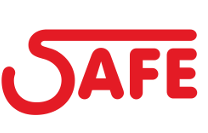Focus on the impact of “plasticulture”

While it is easy to swap your plastic bag for a more acceptable compostable or bio-degradable bag at the supermarket checkout counter, reducing the footprint of plastic in agriculture is an entirely different and far more challenging matter.
“We are extremely conscious of our use of plastic in every aspect of our business – from planting to nurturing, harvesting, packing and exporting our fruit,” says Dries van Rooyen, SAFE’s General Manager of Farming Operations.
SAFE Sales and Marketing Manager, Wibo van den Ende, concurs, although he faces a totally different set of challenges to the farming and harvesting side of the business; increasing pressure for compliance, as far as packaging is concerned.
“Regulations differ from country to country in the European Union,” says Wibo. “What may be frowned upon as far as the use and recycling of plastic in one market is concerned, the same rules are totally acceptable in another.”
Yet, in spite of these challenges, SAFE’s senior management team and individual farm managers are conscious of the negative impact of plastics on the environment and are doing what they can to reduce its use where possible.
According to Modern Farmer, a respected North American publication aimed at the agricultural sector, a new word has been coined to describe the use of plastic in agriculture; plasticulture. “This covers everything from the pipes and tubes that deliver irrigation water to plastic products that are stitched into almost every agricultural activity. Agricultural films – thin plastic membranes used to cover the soil for purposes of weed suppression, temperature enhancement, fertiliser uptake and more – are one of the largest contributors to the billions of pounds of plastics that are discarded by farms across the planet each year.”
“Plasticulture,” says Modern Farmer, is now a $5 billion-plus (R80billion) industry that is expected to double within the next few years. The issues of plastic in agriculture is very complicated,” says Wibo. “I believe that one way to address this is to look at packaging and review what is absolutely necessary to protect the product.”
Standards vary from country to country. In the north they focus on recycling plastic, in the south, it is on paper. There is also a contradiction, that while there is a call for less plastic, consumers demand a wide variety of packaging – in different sizes- that protects their purchase, “says Wibo.
Nevertheless, as the sustainability movement targets the reduction of plastics in the supply chain, retailers will have to find ways and means of addressing the issue.
National initiatives such as the Plastic Pact in the UK and the Netherlands are striving to make all plastic used in agriculture recyclable by 2025. And new European proposals to reduce single-use plastic will diminish the use of food and beverage containers made of expanded polystyrene, among other things.
Supermarkets have also started to act towards reducing plastic. Dutch organic retail chain, Ekoplaza, has recently introduced the first plastic-free supermarket by accepting only biodegradable packaging. Others are expected to follow suit.
“As far as SAFE is concerned, we will keep ourselves fully up to date with the debate around plastics and constantly review what is possible and practical in reducing our dependence on plastic,” says Dries.

